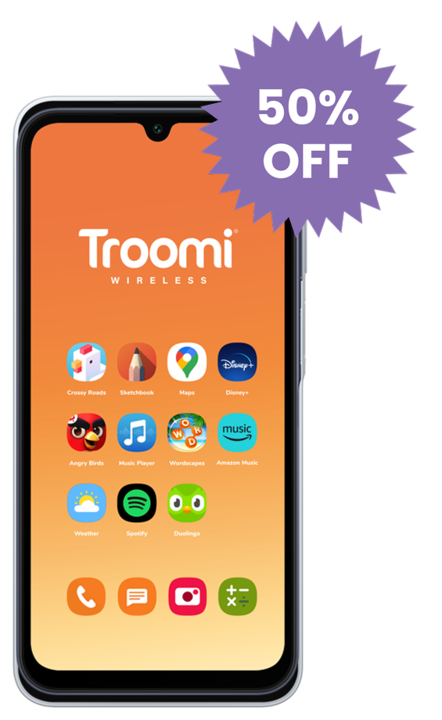You know that weird feeling you get in the pit of your stomach when social media shows your friends laughing at brunch or exploring a mountain trail without you? It’s an emotion I’m sure we’re all too familiar with. Well, did you know that feeling has a name?
It’s called FOMO.
What Is FOMO?
FOMO stands for “fear of missing out.” It’s a form of social anxiety defined by Merriam-Webster as the “fear of not being included in something that others are experiencing.”
Basically, FOMO makes people believe that others are enjoying better lives than they are, whether or not that’s actually true. Verywell Mind puts it best: “FOMO is not just the sense that there might be better things that you could be doing at this moment, but it is the feeling that you are missing out on something fundamentally important that others are experiencing right now.”
Sounds pretty familiar, right? FOMO affects all of us to some degree, from middle school students to wizened, old yoga teachers and beyond. I know that I’m no stranger to feeling left out. However, FOMO has the biggest influence on kids and teens—largely thanks to social media.
Social media makes it easy for kids to connect with their friends, but seeing posts of peers spending time together without them may make kids feel left out or unwanted. A fruitful social life is vital for a young person’s health and development and, when left unchecked, FOMO can inhibit your child’s relationship with their friends and peers.
That’s why it’s important that we teach our kids how to deal with FOMO.
How to Help Kids Deal with FOMO
Hard feelings like FOMO are an inevitable part of being human. However, FOMO doesn’t have to rule your child’s social life. These seven tips make it easy to teach kids how to deal with FOMO.
Get rid of social media. Social media can help teens connect with friends and family, but a recent study shows that Instagram stories and Snapchat messages may be the main culprits behind FOMO. That’s why smartphones from Troomi Wireless eliminate social media entirely. Help your child avoid feeling left out by encouraging them to cleanse their phone of anxiety-inducing social media apps.
Turn off notifications. Nothing takes kids out of the present and into the FOMO fog like a flurry of notifications. In fact, feelings of FOMO often arise when notifications interrupt ongoing activities, as a recent academic study reports. Show your kids how to turn off notifications so they can enjoy their hobbies or homework without worrying about missing out.
Listen to your children. Complex emotions like FOMO are difficult for adults to handle, let alone kids. It can be tempting to bottle up hard feelings and set them on the shelf for later. However, discussing our problems and working through them together is infinitely more productive. So, help your kiddo learn how to manage their emotions. If they’re feeling left out, give them someone to talk to. When kids express their feelings and fears through words, they gain a different perspective that may help combat FOMO.
Talk with your kids. After you’ve given your child a listening ear and a shoulder to cry on, take an active part in the conversation about FOMO. Validate their emotions, and let them feel what they feel. Then, gently remind them that it’s impossible to do everything, everywhere, all at once. Encourage them to celebrate the moments that they were present for, rather than mourn the ones they missed.
Ask them, “Would you really have more fun there?” I remember one family vacation where I spent an afternoon on the beach, staring at my phone and wishing I was with my friends. As the ocean crept upon the sand to tickle my toes, however, I realized how silly that was. I was at the beach! There’s nothing better than the beach! Often, kids feel FOMO without pausing to consider whether or not they would really enjoy being elsewhere. Remind your kiddos to slow down and ask themselves where they would rather be.
Teach kids to practice mindfulness. Learning to enjoy the present moment is an essential part of mindfulness. Stillness and meditation have a calming effect on both the body and the mind—so they’re the perfect strategy to help kids work through FOMO-related stress. If your child starts feeling left out, encourage them to put the phone down and focus on the present moment, perhaps using a guided meditation to calm their minds. Troomi phones feature a wide-array of KidSmartⓇ apps like Headspace that make it easy for kids to get their zen on. Click here to learn a bit more!
Cultivate a rich offline life. FOMO stems from a toxic relationship with the Internet. As such, you can help your child avoid feeling left out by curating a rich, offline life. Encourage your kiddo to practice more phone-free activities like reading, creating art, riding their bike through the neighborhood, having playdates with friends, and spending time with family. When kids thrive in the real world, they’ll be less likely to spend time on FOMO-inducing social media.
No Mo’ FOMO
FOMO is a very complex and very real feeling that most kids deal with on a regular basis. Hard feelings and emotions, including the fear of exclusion, are a natural part of being human. However, it’s hard to know how to deal with FOMO. Remind your child that they are validated in feeling sad and upset, but that these hard emotions can pass just as quickly as they arrived.
After they’ve had time to sit with their feelings, help your kiddo find something exciting to do that will wash the fear of missing out right out of them. Read a book, take them on a drive to their favorite park, or call up a friend and arrange a playdate. After all, the best way to help kids beat FOMO is to show them how to enjoy doing their own thing.
That’s what we call JOMO—the joy of missing out.


